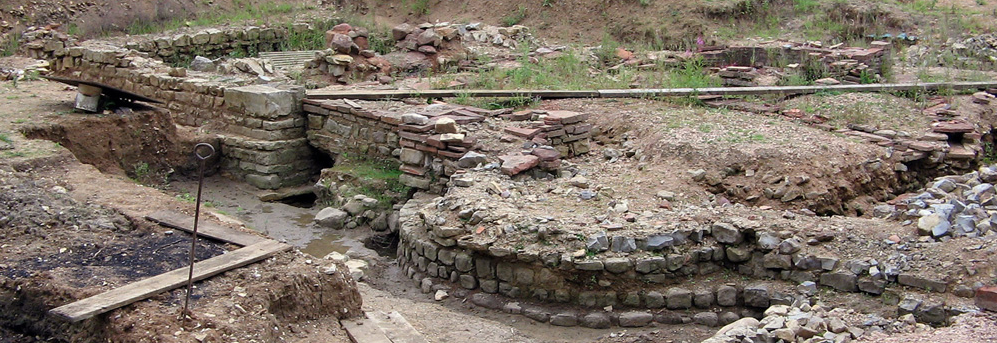Tripontium - Roman Rugby

Tripontium
Tripontium (the place of the three bridges) was a Romano-British small town (a 'small town' being distinguished in size and function from a city of municipal status), which flourished between the latter half of the first to the early fifth centuries AD. Towns of this kind often had Roman military origins as the stationed legions (XIIII and XX) took advantage of surrounding fertile lands for resources.
Tripontium is located within the modern town of Rugby, Warwickshire, the area of which was also occupied by the Corieltauvi and Catuvellauni tribes. The Corieltauvi were once known as the Coritani due to corruptions in the 7th century AD text of the Ravenna Cosmography. An inscribed tegula (roof tile) bearing the name of the tribe as the Corieltauvi was found at Tripontium and corrected the debate.
The town’s situation within the Midlands was important for its function being positioned on the Roman road named Watling Street. Like its surrounding small towns, Tripontium held an administrative function which served the Cursus publicus, the Roman courier service. A mansio (staging post) and bathhouse were to be provided along major roads within ten Roman miles at these towns to allow Roman officials and travellers to rest. The remains of these structures were found during excavations but are no longer visible.
Bathhouses (above) are more easily identifiable than mansiones due to their structured rooms; the frigidarium (cold), tepidarium (warm), and caldarium (hot,) and their unique heating system known as the hypocaust. The mansio can be identified because of its rooms positioned around a central courtyard. These rooms contained sleeping, dining, and public meeting quarters. It is also possible that shrines and temples once existed as carved figures believed to depict Celtic deities have been found within the tribal area.
Roman Towns
What were the main functions/buildings of a town in Roman Britain?
- Public bathhouse
- Water wells
- Food production
- Craft (metalwork and clothes).
- Farming – for food and to be used for taxation.
Aside from public buildings, humble rectilinear timber houses lined Watling Street which combined domestic living spaces for inhabitants with workshops and attached farms. Living spaces were located towards the back whereas the workshops were at the front with open gable ends to allow smoke and fumes to escape more easily from industrial crafts such as metalworking. Many houses had enclosed farmsteads for cultivation and livestock rearing, particularly of cows and pigs for their diet and sheep for wool production.
The whole of the Midlands in the fourth century AD saw the demise and eventual abandonment of towns, most likely due to barbarian raids. Tripontium was one of such towns although the settlement may have been occupied for a brief period by the Anglo Saxons.
